It’s pretty much expected these days for a high budget Hollywood feature film to contain an extraordinary amount of spectacular visual effects. However it’s rare for independent movies to get anywhere near the level of visual effects shots that forty two year old director Steve Gomez, managed in his first film Kill Command. Working from inside his vfx Emmy Award winning company, Bandito the director and his team succeeded – even if it was a good bit harder and took longer than he’d have liked.
The film tells the story, set in a near future, of a technology-reliant society that pits man against killing machines. An elite army Marine unit is helicoptered to a remote, off-the-grid island training facility. What starts out as a simple training exercise descends into a terrifying battle to the death, as the Marines discover the island is overrun by an enemy that transcends human limitations.
To build the futuristic world required the film makers to not only create believable robot killing machines, but environments and vast amounts of vfx just to hide the present day world. Typically, a low budget production is shot quickly to keep down costs and has limited production design and access to expensive locations. This film demanded exotic locations, long lingering CG shots – and all on a total budget of just one million pounds. Many people involved with making the film questioned whether the film was ever going to be completed, but late last year and after a great deal of struggle, the team completed the film and the trailer ignited the internet.
“When we first started out, the shot count was about 500, but the initial script was incredibly ambitious…the count rocketed up as we went along,.. in a science fiction movie just everywhere you turn – every shot has to be an effects shot,.. everything has to be worked on,..” explained the Director, who also acted as visual effects supervisor on the film along side Peter Duncan. “The vfx was multiplied by the fact the we weren’t even hiding any of our effects work, it wasn’t as if the robots were all hiding behind trees,” he joked. “A lot of the time they were just standing there for really long shots”. The Kill Command final shot could would increase after the shoot to just over one thousand shots. To complete this kind of shot count, typical studios employ hundreds of VFX artists working over a period of about eight months to a year. Kill Command had just a core group of seven artists – that ramped up briefly to twenty.
“We started our visual effects company Bandito VFX back in 2002 with one sole aim, to build a company that could make quality VFX for our first film” explained Gomez. In reality it took ten years before the film was started, and to pay the bills Bandito primarily does vfx for the episodic TV market. Even throughout the entire film’s production, Gomez and Bandito had to continue to work on TV effects to pay the bills.
Kill Command’s solution was to have a long post period, after a few false starts and extreme patience by the production company : Vertigo Films, – an extended VFX period was agreed upon. “It’s obvious that this would improve the odds on success, but it’s remarkable how few production companies would accept this as a solution, preferring to cut quality rather than extend the postproduction period” explained Gomez. There were benefits to a small crew as the shots were not spread across an enormous crew. Each artist had the time to be able to take ownership of a whole scene. This proved a great creative incentive and allowed the company to attract talented artists who wanted something more to put on their showreel than just a small part of a shot or just one or two shots from a scene. With time it also became obvious what kind of shots each artist would excel at. The long post schedule meant that inexperienced artists that joined the show would learn enough to become invaluable by the end of postproduction. For example, the film required a lot of camera tracking. One of Bandito’s artists, Jamie Barty, requested to be allowed to learn 3DEqualizer and during the extended post period, he moved from learning the software to being somewhat of an expert. Gomez was “incredibly impressed with 3dEqualizer – just amazing.. we tried other things but trying to track the anamorphic lenses was extremely hard… – but once Jamie was trained up on it – he tracked all our shots on it”.
PreProd.
The team had an extensive storyboarding and pre-production period. This work ranged from drawn story boards to highly rendered concept art (below)
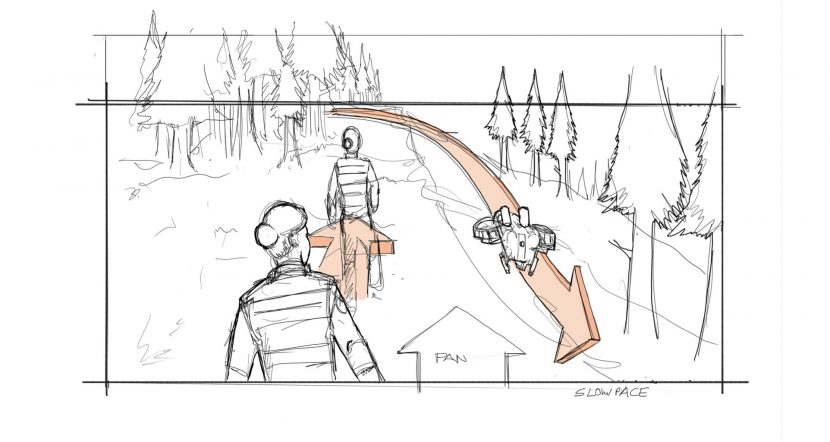
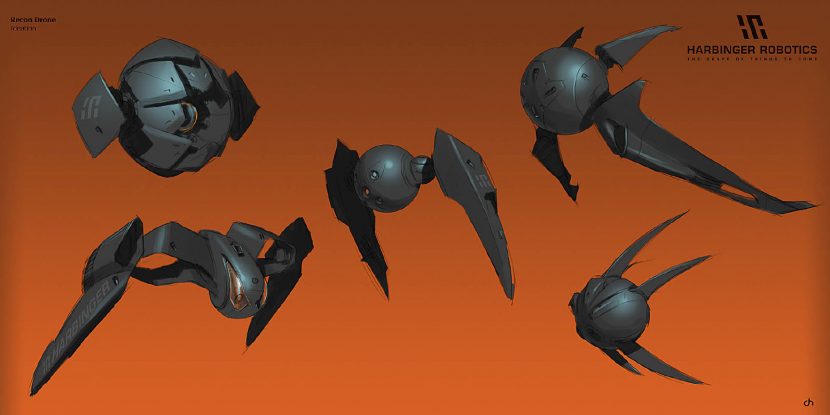
The initial drone designs (above) evolved during post. While the main robots were rendered in Arnold, Gomez himself did the drones. “For my sins, I am a bit old school, and I have been doing this (vfx) for quite a long time – so I did them in Lightwave, …- so the drones were textured and rendered out in Lightwave”.
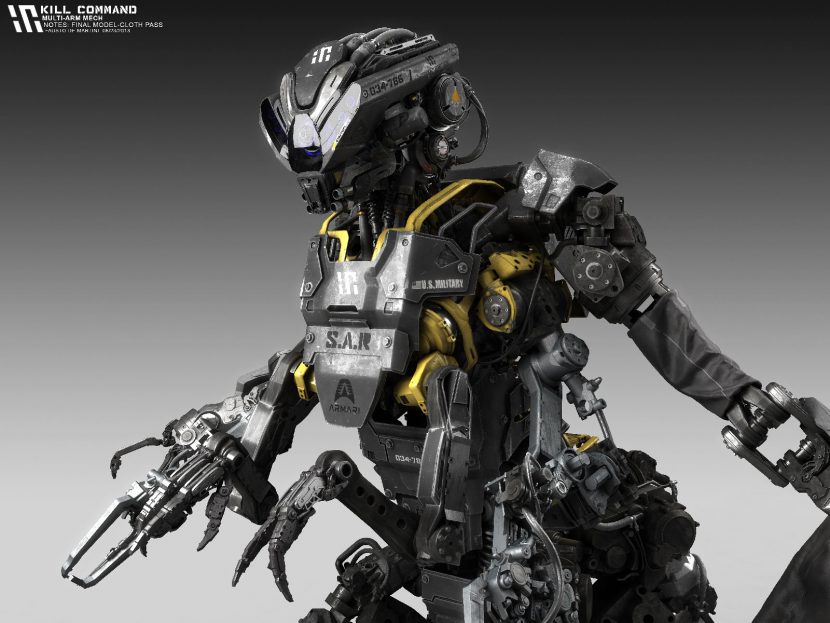
Onset
The film had a relatively short shoot schedule of only five and a half weeks. The initial airfield location was in Bentwaters Parks in Suffolk, this required extensive set extension.
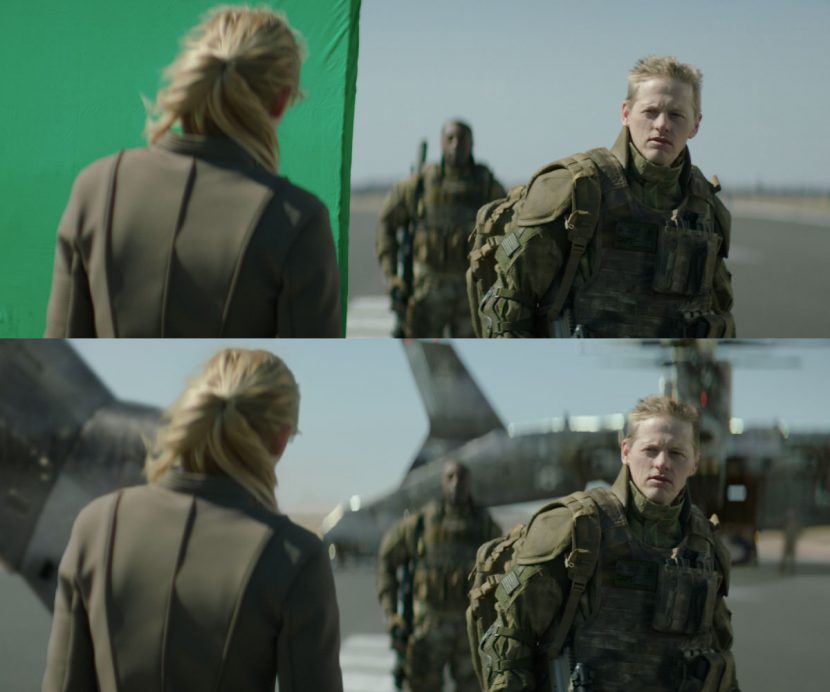
Cinematographer Simon Dennis, (whose previous films included The Sweeney )– and the Director, settled on a style that was very much in keeping with 1980’s action films such as Die Hard. The film was shot on Alexa. They decided to shoot the film on Hawk Anamorphic lenses. “They really gave us a great look and a load of headaches in post,” remarked Gomez. “We were shooting in very grey and rainy environments – fairly dull and without them the film wouldn’t have looked so great.. the anamorphics just made things look wonderful.
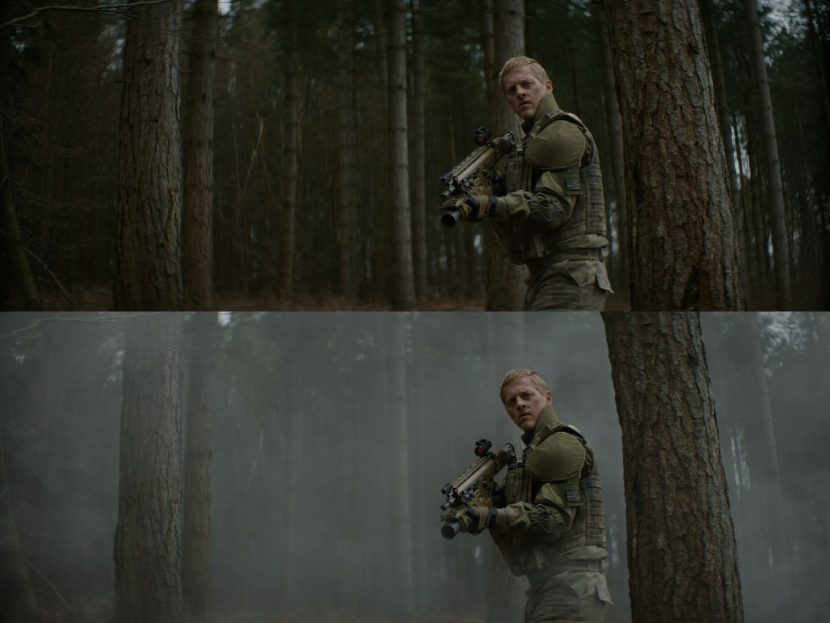
The wood location was Coldharbour near Dorking and the Alamo style ending of the film was shot in The Old Vinyl factory in Hayes, London.
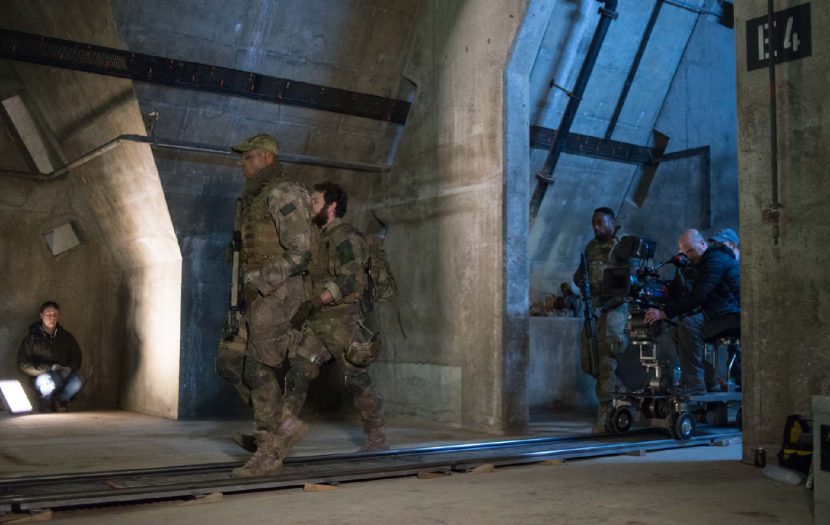
Post
After an initial editing period at Vertigo Films, the edit moved to Bandito VFX so that editing decisions could be made in the company with the VFX artists working alongside. The editor on the film was Gomez’s partner Celeste Bothwick. Gomez points out that not only did “Celeste do the edit but she organised everything and everyone for the edit, and in fact I think if the edit had been done elsewhere, away from Bandito – it wouldn’t have gotten done, – it was just so helpful. Having VFX artists involved in the editing process and in the same room – streamlined the communication process”. It also helped VFX artists understand the problems with the edit and try to help rather than find themselves ordered to fix. Bothwick served as editor on the film as well as supervising hundreds of animatics and making sure the VFX would edit seamlessly into the film.
With the extremely small team, the VFX on Kill Command became a kind of hand-crafted art form, “it ended up being the key for us to hit the kind of quality we were after” explained Gomez. As there was only seven key artists on the entire feature it is interesting to see the division of labour: Peter Duncan supervised two-hundred animated vfx robot shots singlehandedly and helped Barty with tracked a little over six hundred shots.
Mark Braithwaite and Charlie Ellis lead the compositing with nearly six hundred shots using Nuke, although Gomez himself would use After Effects when working on his drone shots. Pedrom Dadgostar lit and rendered three hundred and fifty shots using the Arnold renderer. Dadgostar and Bandito were extremely impressed with the photo realism they could get from Arnold on the CG robots, and how well that allowed the characters to be integrated into the background plates. “Arnold rescued us to be honest,” explained Gomez, “I can’t imagine anything else that would get through those types of renders as fast as that”. The team had a small render farm which grew over the course of the film. “We started with just two computers, .. but we ended up with some really good computers (5 Blade render farm) by the end”. The film required more computer power than Bandito had, but fortunately the team had developed a good working relationship with computer manufacturer Armari who were keen to support them with computers and twenty-four-hour maintenance. “Just getting these computer resources was a huge boost” says Gomez.
Michael Gardiner produced nearly eighty digital matte paintings which is every digital matte seen in the film. Leah Appleton rotoscoped and supervised the rotoscoping of close to five hundred shots. Johnny Jenkins made eight hundred texture maps to fit onto thousands of individual parts that made up the lead bad robot “Multi-Arm”… this was just one of Johnny’s robots.
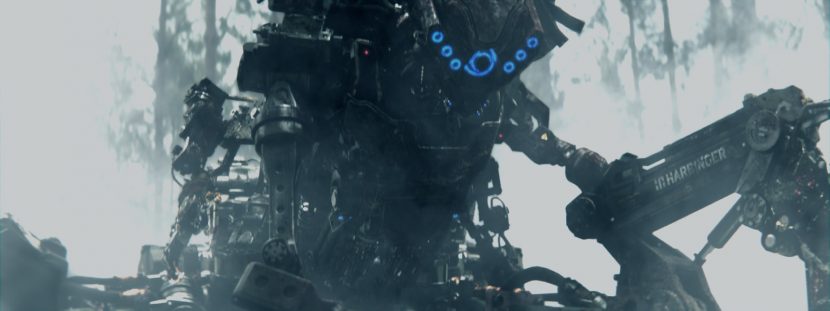
Part of the post process design was producing graphical user interfaces for the main characters enhanced vision. This was done using After Effects.
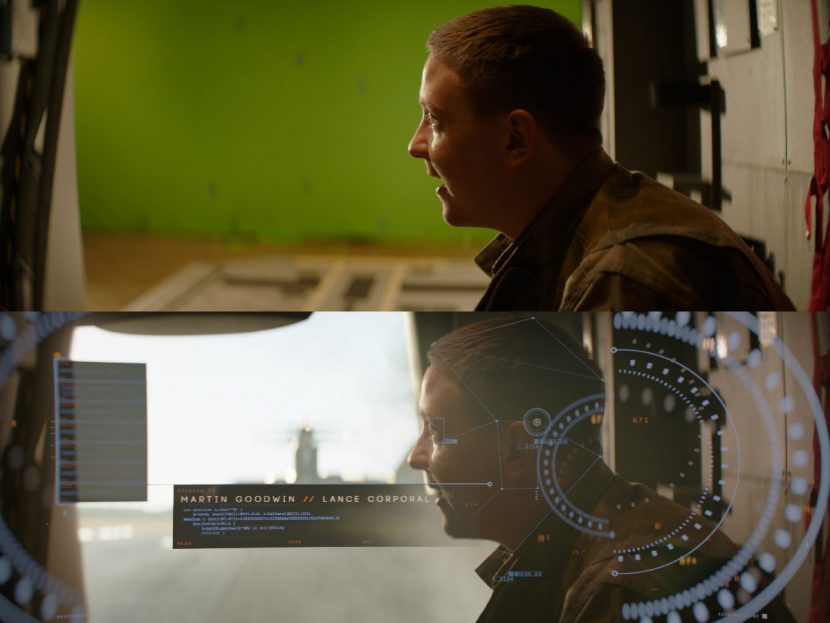
The team did build a head of the main robot to use on set, in an effort to reduce the number of effects shots by having at least a real robotic head for closeups. While the head was made, it was both heavy and bulky and the team quickly decided that with a small crew carrying a huge prop head a forest was not a great idea. As it turned out the actual CG head changed from the early design anyway.
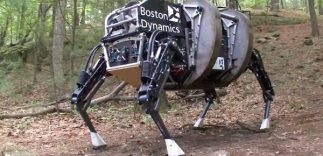 Gomez initially pitched three ideas to the production company Vertigo Pictures that had previously produced Gareth Edwards’ film Monsters. Gomez and Edwards were at school together. Edwards has since moved on to make Godzilla and is directing the next Star Wars film. “Watching Gareth go through Monsters and then take off has been very inspirational”. Gomez was also inspired the Boston Dynamics real life robots .
Gomez initially pitched three ideas to the production company Vertigo Pictures that had previously produced Gareth Edwards’ film Monsters. Gomez and Edwards were at school together. Edwards has since moved on to make Godzilla and is directing the next Star Wars film. “Watching Gareth go through Monsters and then take off has been very inspirational”. Gomez was also inspired the Boston Dynamics real life robots .
“I saw that video of the Boston Dynamics robot walking through the woods, and I though – man how scary would that be if it had a gun on top of it!” explained Gomez. While he presented three ideas to Vertigo – he did not expect this script to be the one the company preferred but they were keen to try something different and Gomez really liked this genre and couldn’t have been happier with the decision.
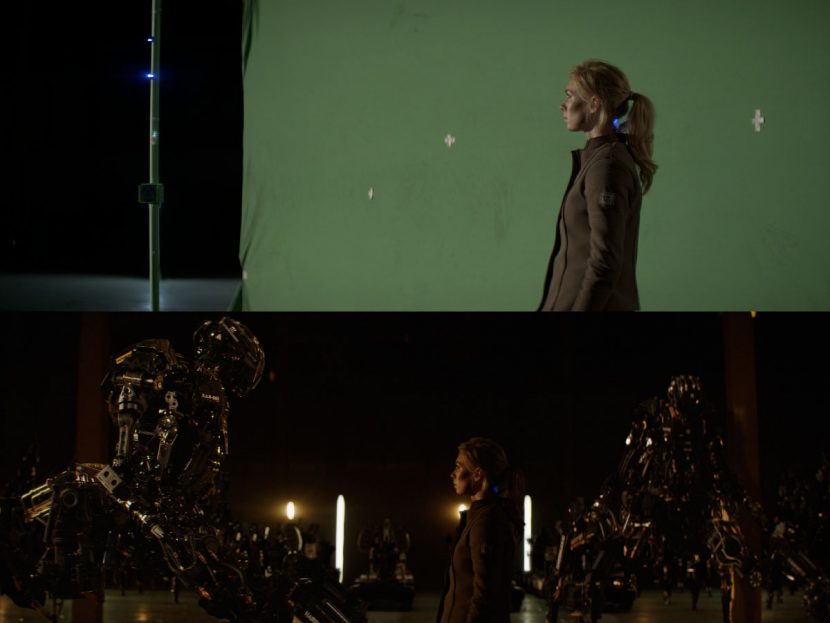
The film will premiere in London later this week at the Sci-Fi London film festival: May the 5th at the Hackney Picture House.

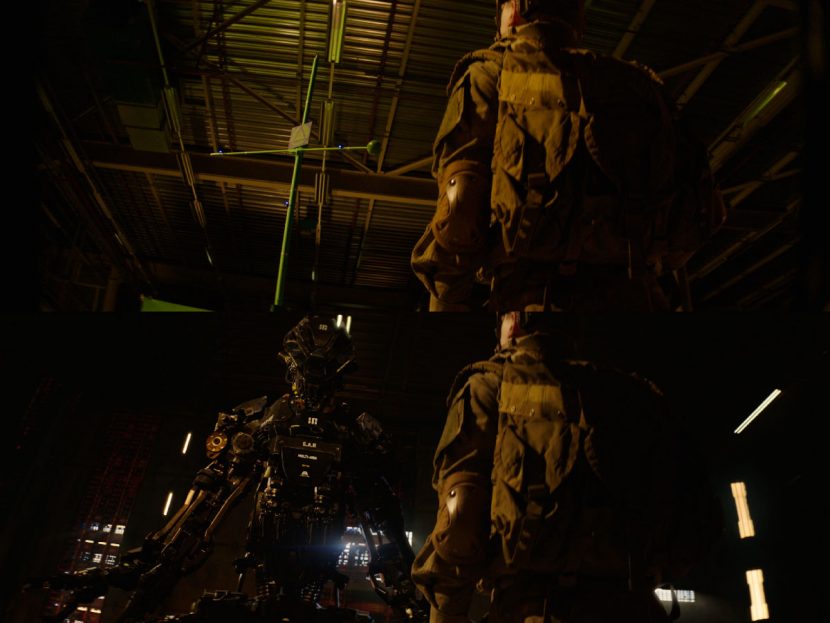
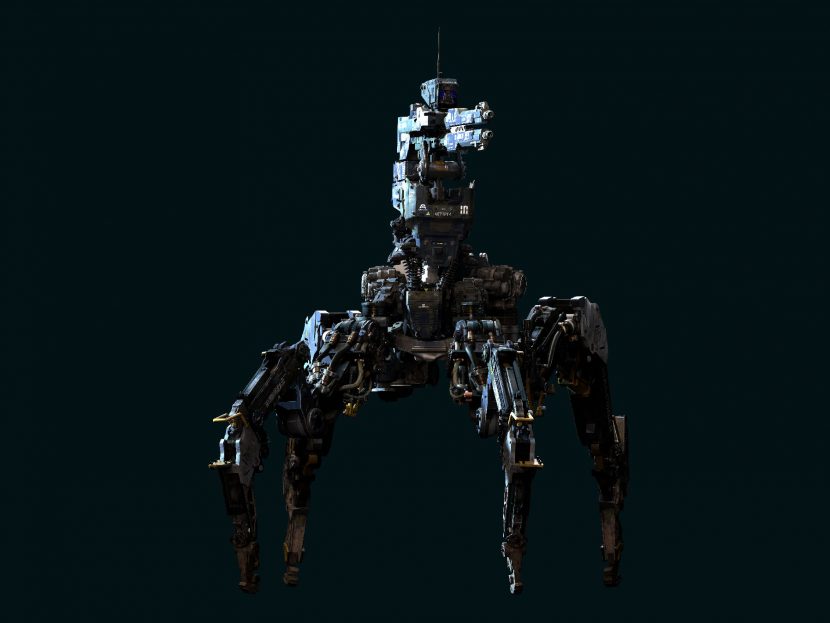
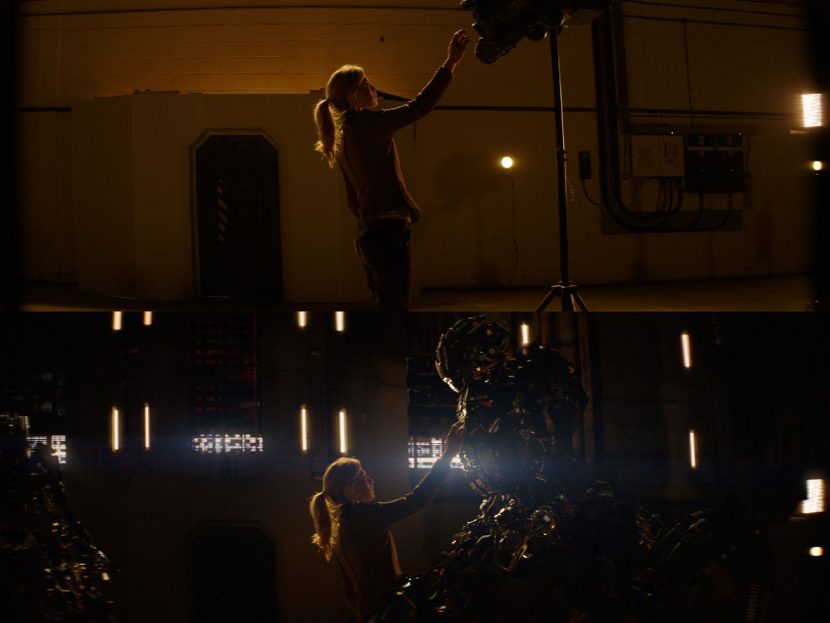
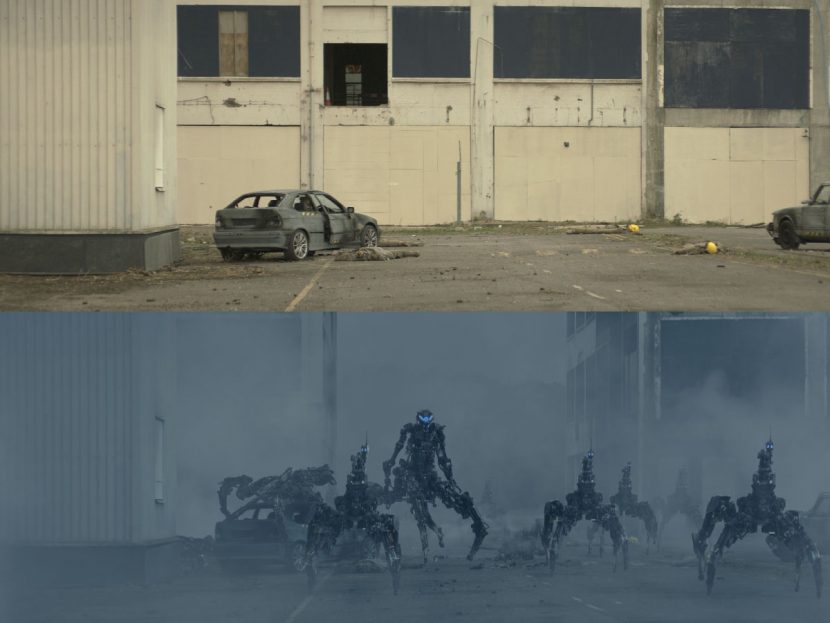
Hey guys – the stand in head was built by Leigh Took and Bob Ballan at Mattes and Miniatures in Bray Studios (http://www.mattesandminiatures.com/). Managed to catch them in a slow period – their model work for ‘The Monuments Men’ had just been pushed back so we slotted in nicely.
I just saw this on Netflix and just for the VFX quality alone I would have been happy seeing it in theaters. I could feel the connection Steve had as director/VFX artist, it made the story and action that much more compelling and watchable. Excellent first effort and I look forward to bigger and better.